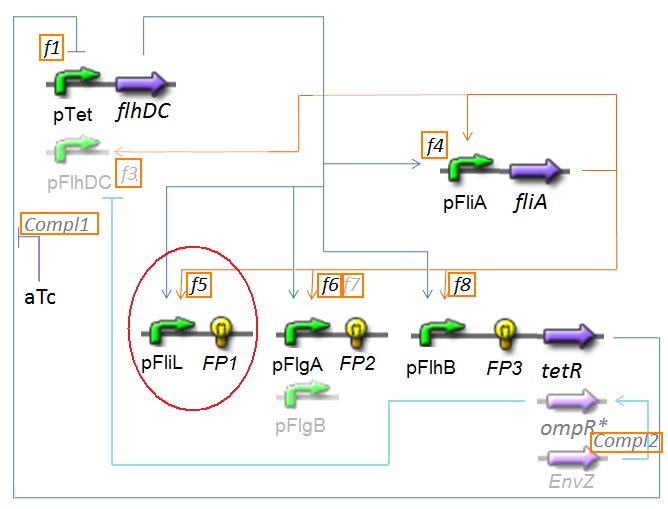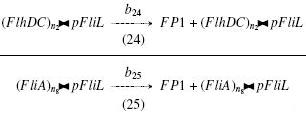Team:Paris/Modeling/Molecular Reactions
From 2008.igem.org
(Difference between revisions)
| Line 4: | Line 4: | ||
We show here the elementary reactions from wich we started. They intend to be "exhaustives" in the sense that every steps of the {{blue|system}} is described. Each of those reactions has to be "mathematically interpreted", in a {{blue|model}} that accounts for the important phenomenon, and in the same time allows us to find {{blue|experimentally}} every involved parameters. | We show here the elementary reactions from wich we started. They intend to be "exhaustives" in the sense that every steps of the {{blue|system}} is described. Each of those reactions has to be "mathematically interpreted", in a {{blue|model}} that accounts for the important phenomenon, and in the same time allows us to find {{blue|experimentally}} every involved parameters. | ||
| - | + | {{Paris/Toggle|see more|Team:Paris/Modeling/More_Mol_Reac_Intro}} | |
| - | + | ||
| - | + | ||
<br> | <br> | ||
| - | '''The | + | '''The system we are studying is the {{blue|"Core System"}} ''' that we can represent in the scheme just below (with all alternatives ''pFlhDC'' or ''pTet'' and ''TetR'' or ''envZ'' or ''OmpR<sup>*</sup>'') |
| - | + | ||
| + | {{Paris/Toggle|see more|Team:Paris/Modeling/More_Mol_Reac_System}} | ||
{| border="1" width="100%" style="text-align: center" | {| border="1" width="100%" style="text-align: center" | ||
Revision as of 23:45, 26 October 2008
|
Molecular Reactions
We show here the elementary reactions from wich we started. They intend to be "exhaustives" in the sense that every steps of the Template:Blue is described. Each of those reactions has to be "mathematically interpreted", in a Template:Blue that accounts for the important phenomenon, and in the same time allows us to find Template:Blue every involved parameters. ↓ see more ↑
The system we are studying is the Template:Blue that we can represent in the scheme just below (with all alternatives pFlhDC or pTet and TetR or envZ or OmpR*) ↓ see more ↑
for complete .pdf with all reactions and references : [list of reactions/equations]
|
 "
"





